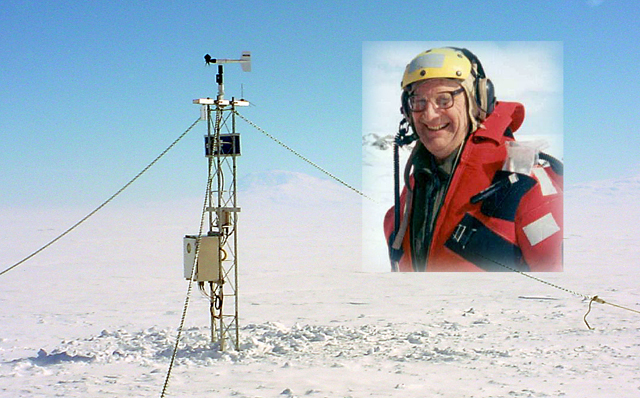R.I.P.: Charles R. StearnsUW-Madison professor was polar pioneer in meteorologyPosted June 24, 2010
Charles R. Stearns Stearns was a professor in the Department of Atmospheric and Oceanic Science His association with the University of Wisconsin spanned 64 years, beginning as an undergraduate in 1946, after his service as a U.S. Army infantryman in World War II (1943-1946), during which he participated in the invasions of Leyte and Okinawa. He earned all three of his degrees from the university — a Bachelor of Science degree (1950), a Masters of Science degree in meteorology (1952) and Doctorate of Philosophy in meteorology (1967). He served as a member of the faculty since 1965. Stearns was the principal investigator on the Antarctic Automatic Weather Station (AWS) program In 1992, Stearns envisioned another method of transforming the meteorological studies of the Antarctic — the generation and collection of satellite images — and created the Antarctic Meteorological Research Center Stearns taught more than 11 classes during his career and was involved in more than nine field projects. He deployed to Antarctica 17 times. He was advisor to 30 students over his career, and provided significant assistance to a half-dozen other students in the United States and abroad with their research. Professor Stearns was a deeply respected colleague and a generous spirit who spent a significant amount of his career exploring Antarctica’s weather and climate and its impacts on the rest of the world. He will be sorely missed. Obituary and memorial information will be updated on the AWS-AMRC homepage |



For USAP Participants |
For The Public |
For Researchers and EducatorsContact UsU.S. National Science FoundationOffice of Polar Programs Geosciences Directorate 2415 Eisenhower Avenue, Suite W7100 Alexandria, VA 22314 Sign up for the NSF Office of Polar Programs newsletter and events. Feedback Form |


